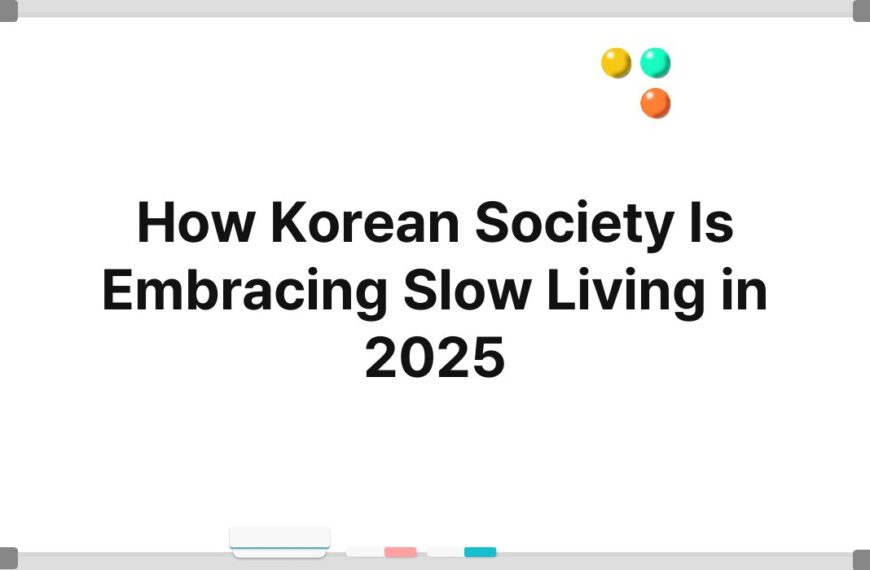[K-Bridge/Samuel] How K-Pop Fans Are Redefining Fandom Culture has emerged as a significant phenomenon in the realm of music and entertainment.
This transformation is characterized by the active participation and influence of fans in various aspects of the K-Pop industry.
Unlike traditional fandoms, K-Pop fans engage deeply with artists, shaping their careers and the overall culture surrounding them.
The rise of social media has facilitated this connection, allowing fans to express their support and creativity on a global scale.
Reading this article will provide insights into the unique dynamics of K-Pop fandom, the ways fans are influencing the industry, and the implications of these changes on wider cultural trends.
The Evolution of K-Pop Fandom Culture
Historical Context of K-Pop Fandom
K-Pop fandom has evolved significantly over the last few decades, transitioning from a niche interest to a global phenomenon.
Initially, K-Pop was primarily consumed within South Korea, with fans primarily engaging through traditional media outlets such as television and radio.
However, the advent of the internet and social media platforms has drastically altered this landscape.
Fans can now connect with each other and with artists in real-time, transcending geographical barriers.
This evolution has also led to the emergence of various fan clubs and online communities that foster interaction and collaboration among fans.
These groups often organize events, fund projects, and create content that celebrates their favorite artists.
The sense of belonging to a larger community has become a defining feature of K-Pop fandom, enabling fans to share their passion and support in meaningful ways.
The Role of Social Media in Fandom Dynamics
Social media has played a crucial role in redefining K-Pop fandom culture.
Platforms like Twitter, Instagram, and TikTok allow fans to communicate directly with artists and fellow fans, creating a more intimate and interactive experience.
This direct line of communication also enables fans to express their opinions and preferences, influencing artists’ decisions regarding music, fashion, and public appearances.
Moreover, social media has empowered fans to showcase their creativity through fan art, covers, and dance challenges.
These contributions not only enrich the fan experience but also help artists gain visibility and recognition, further solidifying the bond between fans and idols.
The viral nature of social media content means that a single post can reach millions, amplifying the impact of fan engagement.
The Globalization of K-Pop Fandom
The globalization of K-Pop fandom has introduced a diverse array of cultural influences and perspectives.
Fans from different countries bring their unique backgrounds and experiences to the K-Pop community, enriching the overall culture.
This diversity is reflected in the ways fans interpret and celebrate K-Pop, leading to the creation of hybrid cultural expressions that blend various elements.
Additionally, the international appeal of K-Pop has prompted artists to consider global markets when producing music.
This shift has resulted in collaborations with international artists and the incorporation of different musical styles, further broadening the genre’s reach.
As K-Pop continues to gain popularity worldwide, the influence of international fans will likely become even more pronounced.
Fan Activism and Social Impact
Charitable Initiatives by K-Pop Fans
K-Pop fans have increasingly engaged in charitable initiatives, using their collective power to make a positive impact in society.
Many fan clubs organize fundraising events to support various causes, from disaster relief efforts to mental health awareness campaigns.
This philanthropic spirit reflects the strong sense of community within K-Pop fandom, where fans rally together for a common purpose.
These charitable efforts often gain significant media attention, further enhancing the visibility of both the causes and the artists involved.
Fans leverage their social media platforms to promote these initiatives, encouraging others to contribute and participate.
As a result, K-Pop fandom has become a force for social good, demonstrating the potential of collective action.
Advocacy for Mental Health Awareness
Mental health has become a prominent topic within K-Pop fandom, with fans advocating for greater awareness and support for mental health issues.
This advocacy is particularly relevant given the pressures faced by K-Pop idols, who often endure intense scrutiny and expectations.
Fans have taken it upon themselves to create safe spaces for discussions about mental health, offering support and resources for those in need.
Moreover, many fans use their platforms to share personal stories and experiences, helping to destigmatize mental health issues.
This open dialogue fosters a culture of empathy and understanding, encouraging fans to prioritize their well-being and that of their idols.
By addressing mental health, K-Pop fandom is not only redefining its culture but also contributing to broader societal conversations.
Political Engagement and Activism
K-Pop fans have also become increasingly politically engaged, using their influence to address social and political issues.
Fans have organized campaigns to raise awareness about various topics, such as human rights, gender equality, and environmental sustainability.
This activism often intersects with the interests of their favorite artists, many of whom have expressed their support for social causes.
The ability of fans to mobilize and advocate for change demonstrates the power of K-Pop fandom as a collective entity.
Through social media, fans can quickly disseminate information and galvanize support for their causes, amplifying their voices in the process.
This political engagement marks a significant shift in the role of fandom, highlighting its potential to drive social change.
The Creative Expression of K-Pop Fans
Fan Art and Content Creation
Creative expression is a hallmark of K-Pop fandom, with fans producing a wide range of content that showcases their love for their favorite artists.
Fan art, in particular, has gained popularity, allowing fans to interpret and visualize their idols in unique ways.
This art often reflects the personal connection fans feel toward the artists, serving as a form of tribute and admiration.
In addition to visual art, fans also create videos, covers, and choreography that celebrate their favorite songs and performances.
These creations not only demonstrate the fans’ dedication but also contribute to the overall K-Pop culture.
By sharing their work on social media, fans can reach a broader audience, further enhancing their engagement with the K-Pop community.
Fan Fiction and Storytelling
Fan fiction has become a popular medium within K-Pop fandom, allowing fans to explore narratives that resonate with their interests.
Through storytelling, fans can delve into the lives and personalities of their favorite idols, creating alternative realities that reflect their desires and imaginations.
This form of creative expression fosters a sense of connection among fans, as they share and discuss their stories with one another.
The act of writing fan fiction also encourages fans to develop their writing skills and engage critically with the material.
Many fans find solace and inspiration in crafting narratives, using their creativity as a means of coping with their emotions.
This form of expression not only enriches the fan experience but also contributes to the overall diversity of K-Pop culture.
Dance Covers and Performance
Dance covers are another popular form of expression within K-Pop fandom, allowing fans to engage physically with the music.
Fans often learn and replicate intricate choreography, showcasing their dedication and passion for their favorite songs.
These performances can be shared on social media platforms, where they can garner attention and appreciation from other fans.
Participating in dance covers also fosters a sense of community, as fans often collaborate with one another to create group performances.
This collaboration not only strengthens friendships but also enhances the overall experience of fandom.
By sharing their performances, fans can inspire others to join in, creating a vibrant culture of dance and movement within the K-Pop community.
The Impact of K-Pop Fandom on the Music Industry
Shaping Artist Careers
K-Pop fans play a crucial role in shaping the careers of their favorite artists.
Through their unwavering support, fans can influence an artist’s trajectory, from music releases to public appearances.
This dynamic relationship often leads to artists tailoring their work to meet the expectations and preferences of their fanbase, creating a symbiotic relationship between artists and fans.
Moreover, the passionate engagement of fans can significantly impact an artist’s commercial success.
Chart rankings, sales figures, and streaming numbers are often driven by fan initiatives and collective efforts.
This influence underscores the importance of fandom in the K-Pop industry, as fans become active participants in the success of their idols.
The Rise of Fan-Centric Events
The importance of K-Pop fandom has led to the rise of fan-centric events, such as fan meetings, concerts, and conventions.
These events provide opportunities for fans to connect with their idols and fellow fans, fostering a sense of community and belonging.
The demand for such events has increased, prompting agencies to prioritize fan engagement in their marketing strategies.
These gatherings not only serve as a platform for artists to showcase their work but also allow fans to express their appreciation and support.
The emotional connections formed during these events can have a lasting impact on both fans and artists, reinforcing the bond that defines K-Pop fandom.
The Influence on Music Production
The influence of K-Pop fandom extends to the music production process itself.
Artists and producers often consider fan feedback when creating new music, leading to a collaborative approach that prioritizes audience preferences.
This trend has resulted in the production of songs that resonate with fans, further strengthening their connection to the music.
Additionally, the incorporation of fan-driven ideas and themes into music allows for a more personalized experience.
Fans feel a sense of ownership over the music, as their voices contribute to the creative process.
This collaborative spirit not only enhances the quality of the music but also solidifies the relationship between artists and fans.
The Future of K-Pop Fandom
Continued Global Expansion
As K-Pop continues to gain traction worldwide, its fandom is likely to expand even further.
The increasing accessibility of music and media through digital platforms allows fans from diverse backgrounds to engage with K-Pop culture.
This global expansion will likely lead to new interpretations and expressions of fandom, as fans bring their unique perspectives to the community.
Moreover, the rise of international collaborations among K-Pop artists and musicians from other genres will contribute to the evolution of the fandom.
As K-Pop becomes more integrated into the global music landscape, the influence of diverse cultures will enrich the overall experience for fans.
The Role of Technology in Fandom
Advancements in technology will continue to shape the future of K-Pop fandom.
Innovations such as virtual reality, augmented reality, and artificial intelligence have the potential to enhance fan experiences in unprecedented ways.
These technologies can create immersive environments where fans can interact with their favorite artists and fellow fans, fostering a deeper sense of connection.
Additionally, the use of data analytics can provide insights into fan preferences and behaviors, allowing artists and agencies to tailor their approaches accordingly.
This data-driven approach will likely lead to more personalized experiences for fans, further enhancing their engagement with K-Pop culture.
The Evolution of Fan Identity
As K-Pop fandom evolves, so too will the identities of its fans.
The intersection of personal and collective identities will continue to play a significant role in shaping fan experiences.
Fans are likely to explore new ways to express their individuality within the context of the larger community, leading to a rich tapestry of identities that reflect the diverse nature of K-Pop fandom.
This evolution will also prompt discussions about the responsibilities and ethics of fandom.
As fans become more aware of their influence, they may seek to navigate the complexities of their identities and their impact on the artists they support.
This introspection will contribute to a more thoughtful and engaged fandom culture.
Conclusion
K-Pop fandom has undergone a remarkable transformation, redefining what it means to be a fan in the modern age.
Through their creativity, activism, and engagement, fans have become integral to the K-Pop industry, shaping the culture in profound ways.
As K-Pop continues to expand globally, the influence of fandom will only grow, paving the way for new forms of expression and connection.
The future of K-Pop fandom holds immense potential, with technology and globalization driving its evolution.
Fans will continue to play a crucial role in shaping the music industry while fostering a sense of community and belonging.
Ultimately, the dynamic relationship between K-Pop artists and their fans will continue to redefine fandom culture for years to come.








